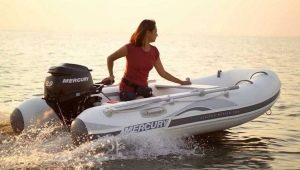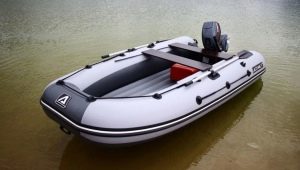Anchors for inflatable boats: what are they and how to choose them?
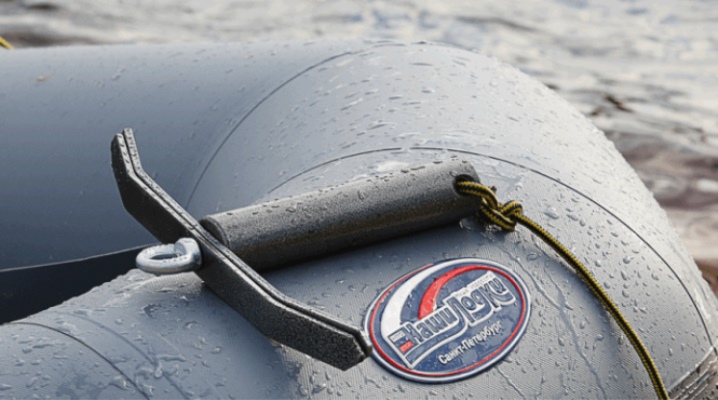
The purchase of a boat involves the purchase of various accessories and equipment. Any experienced fisherman will testify that one of the main acquisitions is a holding device, that is, an anchor (anchor), which guarantees safety on the water.
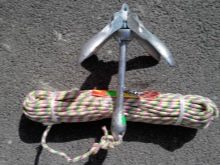
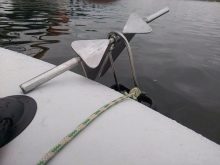
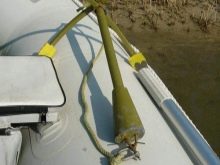
Features and Requirements
Anchor is an important and integral component of any watercraft. But only for rubber boats, the anchor structure is required solely to stop the watercraft at the fishing spot. It is extremely important to create a stable fixation, not dependent on wind or current, so that the holding device is firmly seated on the bottom.
Below are the requirements for all anchors.
- Ensuring a reliable hook with the ground surface under water. This can be achieved either through a large weight of the anchor, or through the selection of the optimal design.
- Easy release when hooked. The anchor must be easily pulled out.
- Compactness. The less space an anchor uses, the better.
- Rust resistant.

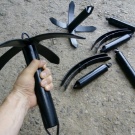

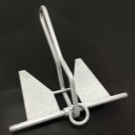

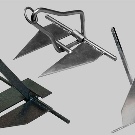
Kinds
The entire category of restraints can be symbolically divided into three subgroups:
- gravity;
- floating;
- clinging to the ground underwater.
To gravity options include simple and very easy-to-use devices, for example, cast iron disks, stones, connected bricks, silt bales, disks from a sports bar, homemade lead fixtures, a caterpillar link from a tractor or tank. These anchors fall to the bottom with their whole body and perfectly hold the craft on the surface of the water.
The downside of these devices is their large volume and weight.
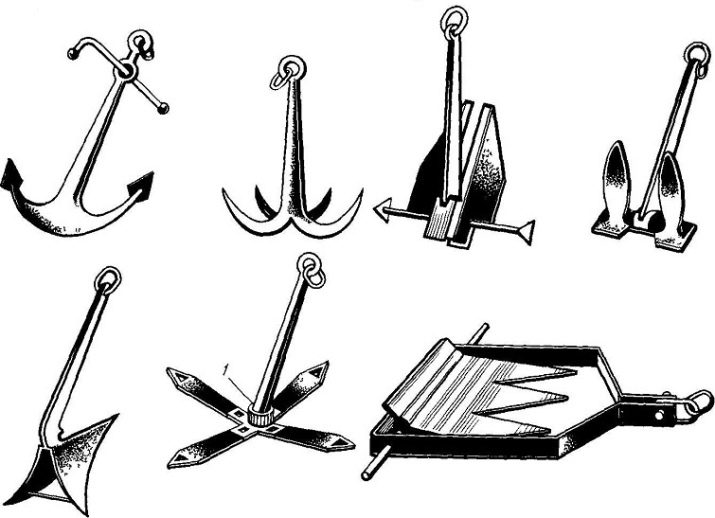
floating options also called parachutes. This name is entirely suitable for their structure. They are ideal for water bodies where there is no current. The parachute holds the boat firmly even in strong winds. To create it, a fabric or good-quality cellophane is used. The structure of the floating device is extremely simple. The length of the lines and the diameter is 1.5 m. It is fixed on a rope 10 m long. In the middle of the parachute circle there is a hole 10 cm in diameter, necessary for the exit of water.
The main forming element of the clinging versions is the paws, which are firmly hooked to the bottom of the river. The paws in them can be very different: both thin wire and wide flat ones. Usually these devices are equipped with all kinds of swivel joints with moving parts. There are about ten popular and proven anchor systems on the market today.
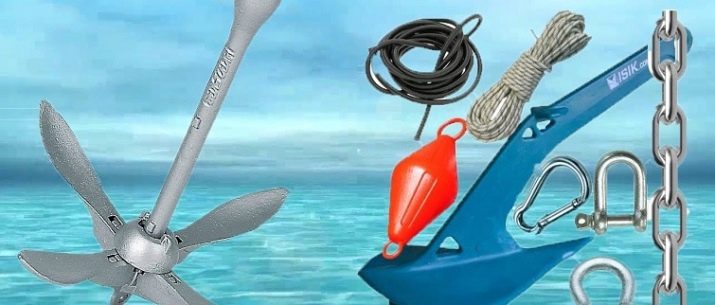
Anchor cat
The most famous is the cat anchor, which is most often placed on PVC boats. This sample has a weight of 2 to 10 kg. Usually folding devices are made for small boats. The advantages of such an anchor are small weight and small size. There are two types of cat anchors, differing in the method of fixing the paws.
In the first version, the legs stand up straight by means of a swivel clutch, and in the second, the method of fixing the legs is similar to an umbrella (yoke fastening).The paws in this case are put forward from the middle.
Anchors of this type are used in reservoirs with different bottoms (silty, rocky, sandy).
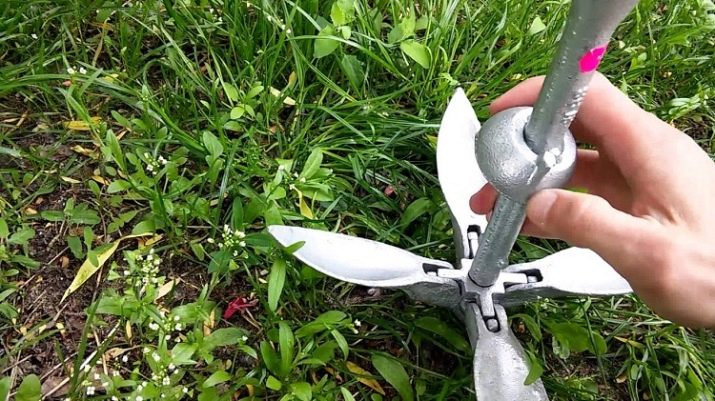
Hall-Denforth device
This option resembles a plow. Such a sample cannot be called very lightweight and compact, but it has great adhesion to soil and pebbles. By means of his smooth blades, he simply buries himself into the soil to a fairly decent depth, then runs into compacted soil and stops along with the watercraft. The anchor (with a mass of 2 kg) is able to hold a boat weighing up to 80 kg. The undoubted advantage of this holding device is the ease of release from the underwater hook.
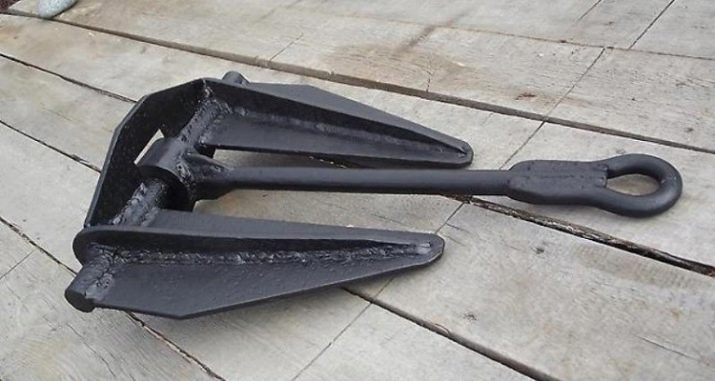
mushroom anchor
Other names - mushroom-shaped, anchor-mushroom. It is similar in configuration to a mushroom. The weight of this model is 3-10 kg. It performs excellently on stony soil and is endowed with small dimensions. This is the best solution for those who prefer to fish on sandy ponds.
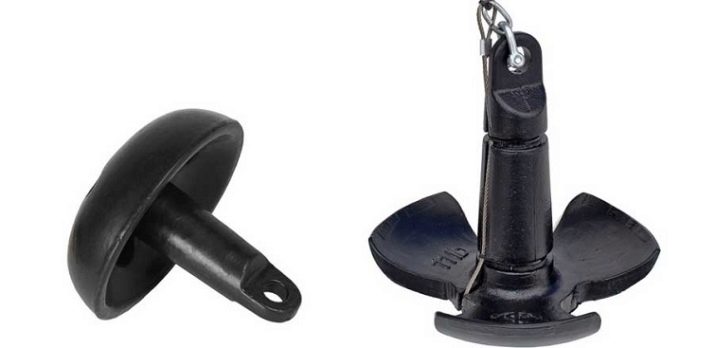
Anchor Bruce
It has the configuration of a large hook, at the end of which two blades stick out in different directions. When immersed, it is buried by means of blades in the soil and fixes the boat.
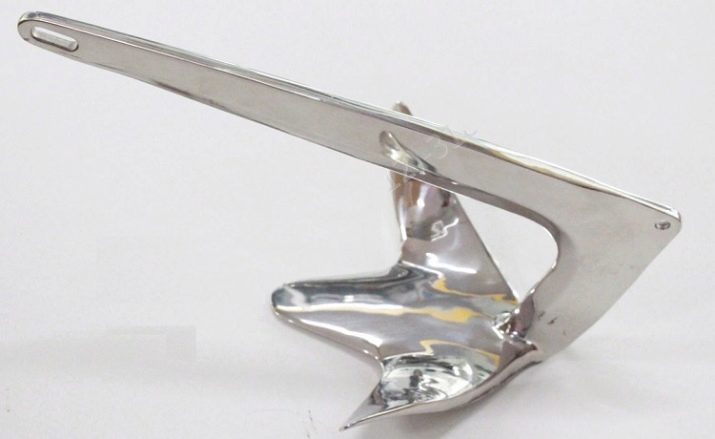
forked anchor
In its configuration, it is similar to a double fork, between the two ends of which a foot is placed. When diving, the share digs into the soil and is fixed in it, and the fork provides a strong grip. The disadvantage is that the device is quite difficult to pull back.
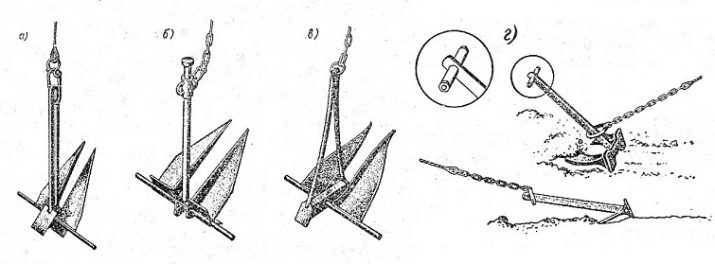
Anchor Nortill
It has the configuration of a four-pointed star at two ends, located symmetrically, there are paws through which the anchor is buried in the soil. Two auxiliary beams protruding in different directions only strengthen the grip.The disadvantage of this modification is a large mass, as well as dimensions, high cost and uncomfortable operation.

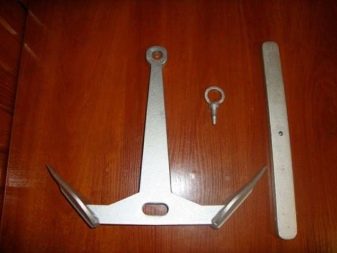
Admiralty anchor
Typically practiced on large boats, but there are precedents for use on PVC boats. In its design, it has a stock, two horns with paws (cast together with a spindle), a bracket, a transom and an eye. The main advantage of such a holding device is its versatility. It can be practiced on reservoirs with any type of bottom. In addition, it is characterized by a considerable holding factor and a simple device.
The main disadvantages are the considerable size and weight, high cost, and difficulty in application.

Porter's anchor
Such a device resembles the Admiralty version. It differs only in the method of fixing the legs, which are attached vertically to the stem by means of bolts. As a result, the holding device is capable of swinging from side to side. The principal advantage of this modification was the fact that when immersed under water, one foot hooks on the soil, and the other on the spindle. This achieves a huge holding force, and the risk that the anchor line catches on the protruding foot is negligible.
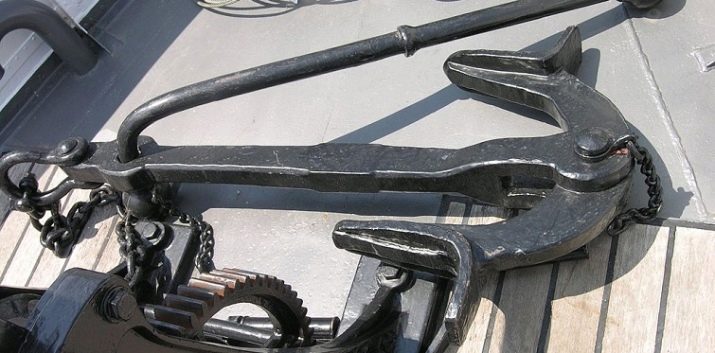
river anchor
By and large, such a device is considered the most multifunctional, since it can be practiced at any depth and in a variety of rivers.
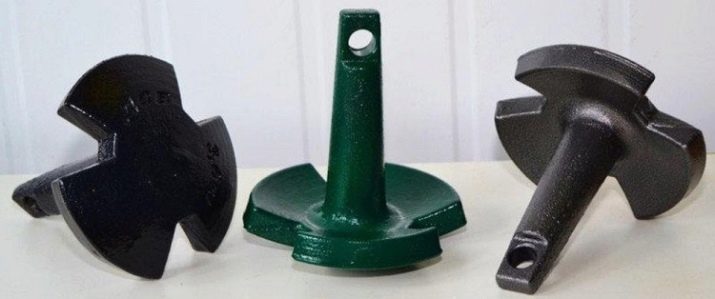
Anchor plow
A distinctive feature of its structure is that it has only one foot and at the same time has a very good holding power. Pros:
- has a high efficiency;
- quickly and thoroughly buried in the soil;
- weighs little;
- compact.
Currently, it is considered one of the most effective devices when used on dense sandy or silty soil.
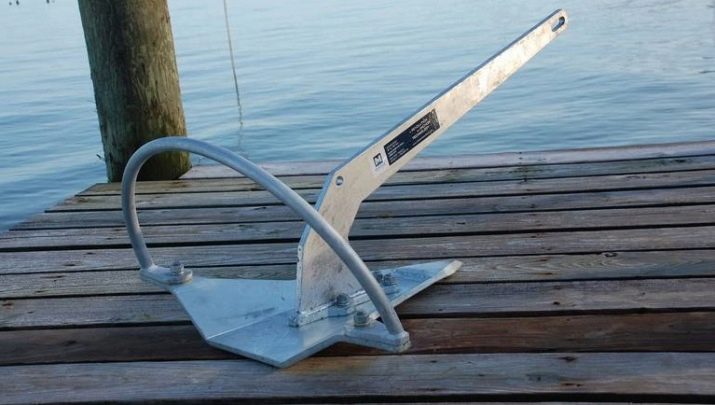
American "Atwood"
The design of the device is similar to a fan, the wings of which are installed straight, and not at an angle to the stem.
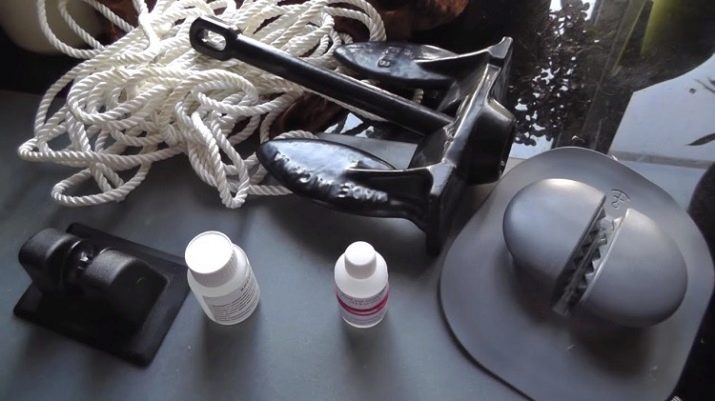
Anchor sucker
New items that appeared not so long ago and operate according to the method of a plate laid on a smooth plane with a concave part are considered peculiar. The same method of suckers is available for octopuses at the ends of the tentacles. Such suction cups function perfectly on smooth muddy or sandy soil. In order for the holding device to lie firmly on the bottom and start working, it is equipped with two suction cups that ensure that the concave plane hits the ground accurately, no matter how the anchor drops.
Moreover, there are also side work surfaces. These devices are completely harmless and do not rust due to heat treatment with polymeric materials.

floating anchor
This is quite an interesting device and, as it turned out, very useful. The principle of operation of such a device is different from the traditional one. It is practiced to restrain a boat that is idle in the wind, or in places where it is not possible to use an ordinary anchor due to considerable depth. Similarly, it can be used as an anchor-balancer so that the craft is constantly bowed into the wind. Significantly restrains movement in the wind. Pretty easy to use.
For the device to work, you need to expand it and just throw it overboard. Due to its own zero buoyancy and the wind pulling the craft in the opposite direction, the device will straighten itself in the water.

How to choose?
Weight and length
When choosing an anchor for your own vessel, you must first take into account the weight and length of the boat. An inflatable boat is lightweight and sensitive to changes in wind speed or current, which means that you should choose your holding device carefully. The ideal holding device should not be heavy, since it will only need to be pulled out manually, since a winch and other device cannot be put on a PVC boat.
It should weigh so much that it is enough to keep the watercraft in the current. Consequently, it is necessary to calculate the weight of the boat with people and equipment in it, the speed of the water, the soil and the depth. Of course, fishing conditions are different, so it is preferable to choose under difficult conditions so that you can fish anywhere. To do this, one nuance must be taken into account - the weight of the anchor in kilograms is equal to the length of the watercraft modulo in centimeters, plus 100 cm, after which the value must be multiplied by 10. For example, for a watercraft 380 cm long, an ideal anchor should have a weight of 4800 kg.

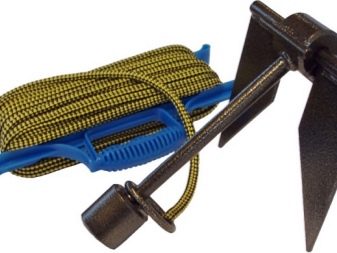
In order not to do the calculation, you can use the compiled weight table.
Anchor weight, kg | Full weight of the boat (with load), kg |
2,3 | no more than 200 |
3,5 | no more than 400 |
5,5 | no more than 650 |
7,5 | no more than 900 |
9 | no more than 1100 |
1 2 | no more than 1500 |
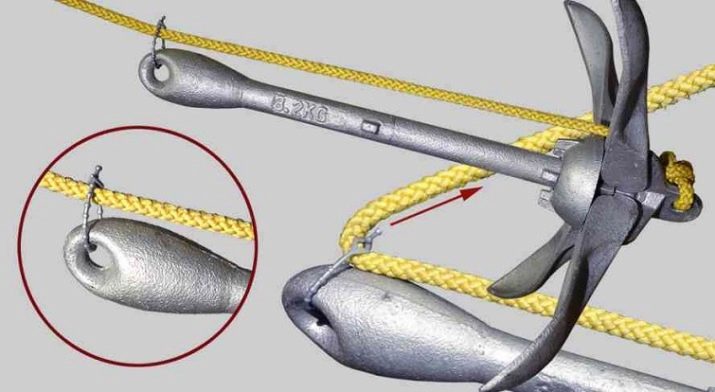
The form
The mass is of course of great importance, but the configuration of the armature must also be taken into account. Most fishermen, not having the desire to spend money on the purchase of anchors, make them on their own. An ordinary “cat” is easy to make, but some simplify this issue by using heavy weights or something similar as a holding device.The rounded outline of the anchor, even if it is heavy, leads to the fact that it drags along the bottom, not providing proper opposition and not fulfilling its role.
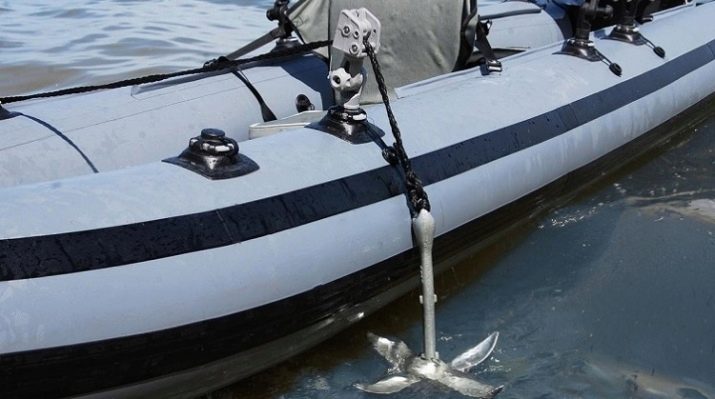
Rope footage
In addition to the anchor, special attention should be paid to its rope (cable). It should be said right away that chains cannot be used for a rubber boat, but only a rope. The length of the cable that descends behind the anchor depends on the strength of the wind and the distance from the surface to the bottom. With a wind of up to three points, the length of the lowered cable should correspond to three depths of the reservoir, with a wind of up to six points - five depths, with a wind of up to 9 points - 7 depths.
For this reason, it is worth knowing the distance from the surface to the bottom of the reservoir where fishing will take place.
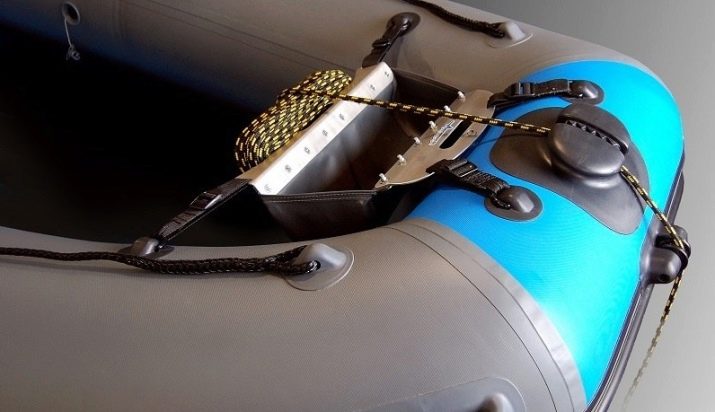
How to tie?
To attach the anchor to the PVC boat, an anchor cable is designed, on the edges of which fires (loops) are constructed. If there are no loops, then it is necessary to make fires with strong knots. Fastening of one end of the rope is made to the anchor by means of a specialized bracket, and the other end to the stem of the craft.
Usually, the place where the rope is fixed on a PVC boat is a specialized eye, eye-handle or a handle for carrying the boat. For fishing in a “strong” place with a decent number of deaf hooks, a buirep is attached to the thickened part of the anchor - an additional cable with a tomb buoy (float). The role of the buoy can be played by a plastic bottle or a piece of foam. If the fisherman's holding device is securely hooked, then he goes to the buoy and raises the anchor to the vessel without any problems.
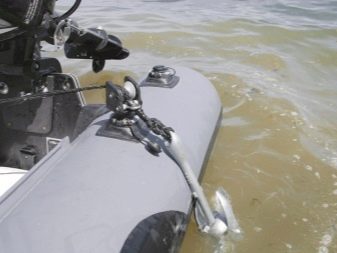
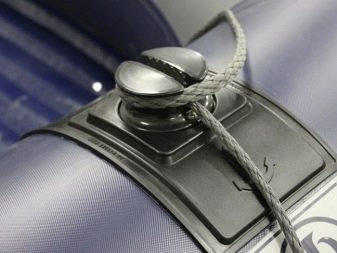
Operating tips
It is not enough just to choose an anchor - you need to know how to use it.For example, when using cat anchors, experts advise to fasten (tie) these devices specifically to the bottom of the loop, and not to the top. In this case, when hooked on a snag or stone, you can break the upper fastener and release the anchor.
Extremely accurate installation of the watercraft must occur with the flow. For this purpose, it is necessary to go a little higher than the parking lot and drop anchor. The release of the rope depends on the strength of the current and the size of the anchor (usually from 3 to 8 m). With a strong current, you will need to install the boat on two holding devices: one on the stern, the other on the bow. First of all, it is necessary to load the anchor from the bow, and then, as the current levels the boat, from the stern.
In addition, you can install a watercraft on two anchors, lowering them from two sides.
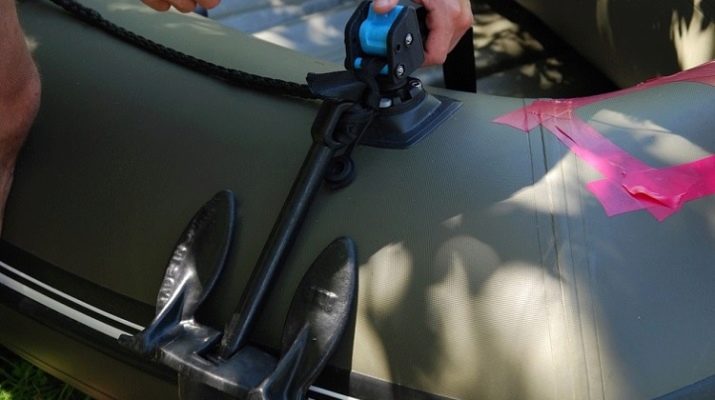
In the next video you will find detailed instructions for making anchors for inflatable boats.























